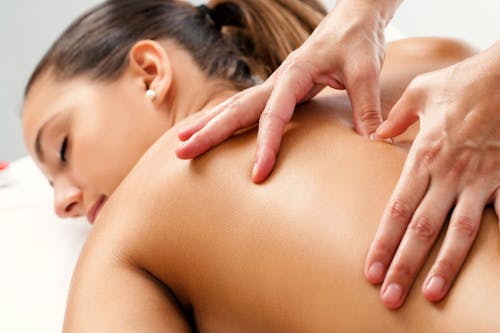If you’ve been dealing with chronic joint pain for some time, then you should know you’re not alone. Chronic joint pain is typically associated with arthritis, although there are plenty of other physical ailments that can lead to joint deterioration and pain.
While physical therapy is not a cure for arthritis, it can help to alleviate the pain, increase your range of motion in the affected joints and help you get control over the problem so that it doesn't get worse. If you are not proactive when it comes to joint pain, it likely will worsen over time, especially if you’re relying on prescription medications to provide pain relief.
If you've been suffering from joint pain and now you’re looking for a solution, call us to schedule an appointment with a physical therapist.
Is your joint pain a sign of arthritis?
Did you know that arthritis is the leading cause of disability across the United States? According to the Arthritis Foundation, approximately 50 million people live with arthritis. While it is possible for arthritis to develop in any joint, it most commonly affects the neck, back, hands, hips, and knees. It can also affect people of any age.
There are two main types of arthritis that are the most common culprits when it comes to joint pain: osteoarthritis and rheumatoid arthritis. Here is a closer look at these types of arthritis and how they affect your joints:
- Rheumatoid Arthritis: If you have been diagnosed with rheumatoid arthritis, your doctor will likely prescribe pharmaceutical treatments to decrease your pain and discomfort. This is an autoimmune disorder in which the body's healing systems attack the joints. Rheumatoid arthritis causes painful swelling and inflammation of the joints.
Although this condition usually begins in the hands, wrists, or feet, it can spread to the hips, knees, or shoulders, while getting progressively worse, if you aren't proactive in fighting it. Physical therapy can be a tremendous help to those dealing with this autoimmune disease.
- Osteoarthritis: Osteoarthritis typically develops later in life and can be caused by poor body mechanics, overuse of the joint, or an injury. This is the most common type of arthritis by far. The cartilage in joints serves as a natural barrier that lubricates and distributes force during physical activity. When that cartilage breaks down and no longer provides a cushion between adjoining bones, the result is osteoarthritis. The hands, hips, knees, and spine are the most common body parts impacted by osteoarthritis.
Certain ailments like gout, bursitis, lupus, or tendinitis can also contribute to joint pain. The source of your joint pain can be determined by a combination of tests that a physical therapist can perform, as well as a thorough examination.
What can a physical therapist do for joint pain?
Your therapist will need to know about the type of joint pain you are experiencing, the times of day when the pain is worse, and any physical activities that you engage in on a regular basis If you have a job that requires physical labor or sitting at a desk all day, tell them. If your condition has already been diagnosed by a doctor, your physical therapist should be made aware of this as well.
Your therapist will likely run you through a series of simple strength tests during your first visit. These will be done to test your range of motion, balance, and posture. This information will be used to help create a customized physical therapy regimen to help you relieve the joint pain, while strengthening muscles to help support the joints.
Your plan of physical therapy will likely contain a combination of targeted stretches, exercises, manual therapy, and body mechanics.
Manual therapy is a specialized type of therapeutic massage that your physical therapist is trained in; manual therapy can help to soften tissues and relieve pain associated with your joint condition.
Body mechanics involves teaching you the proper way to move, sit, stand, lift objects, and engage in other daily activities, without causing pain to your joints. The exercises will likely be low-impact to relieve pressure on the joints while strengthening your muscles, such as water aerobics.
Common symptoms of joint pain or arthritis
For most people with joint pain, general discomfort is the most common complaint. But depending on what the cause of your joint pain is, you may experience a variety of different symptoms, including, but not limited to the following:
- Chronic pain
- Impaired range of motion
- Stiffness
- Redness
- Inflammation of the affected area
- Inability to grasp objects
- Swelling
If you’re noticing any of the above symptoms, there are two things you should not do. First, don’t expect it to go away on its own. Second, don’t rely on prescription medications for temporary relief. Call a physical therapist at our office today to learn more about the causes of joint pain, and find out how you can begin keeping your own at bay.
Are you ready to find relief today?
You deserve a normal, healthy, active lifestyle. The goal of your physical therapy will be to help you take back control of your life by minimizing the joint pain. Call our office today to schedule your first appointment with a physical therapist.



